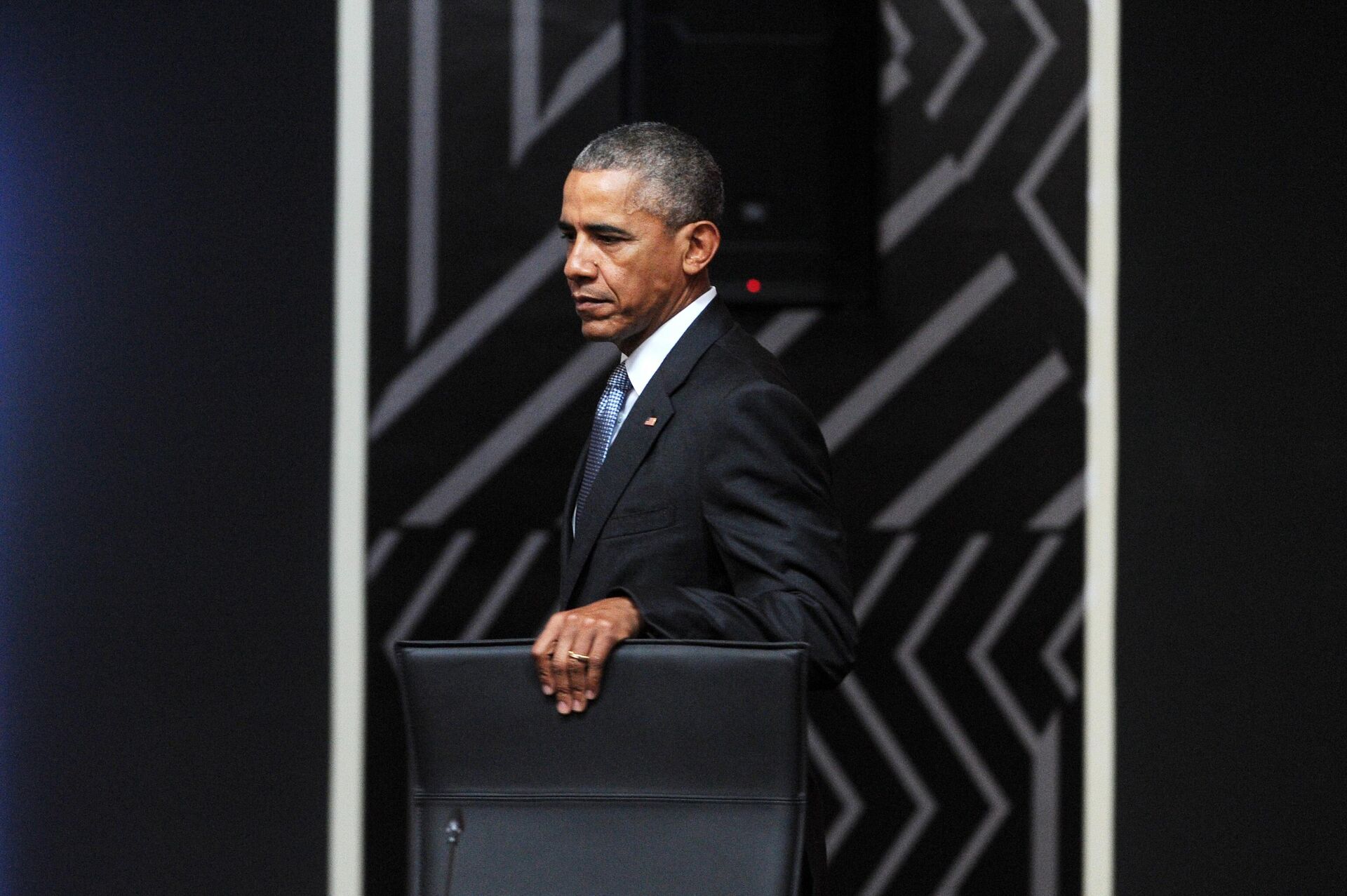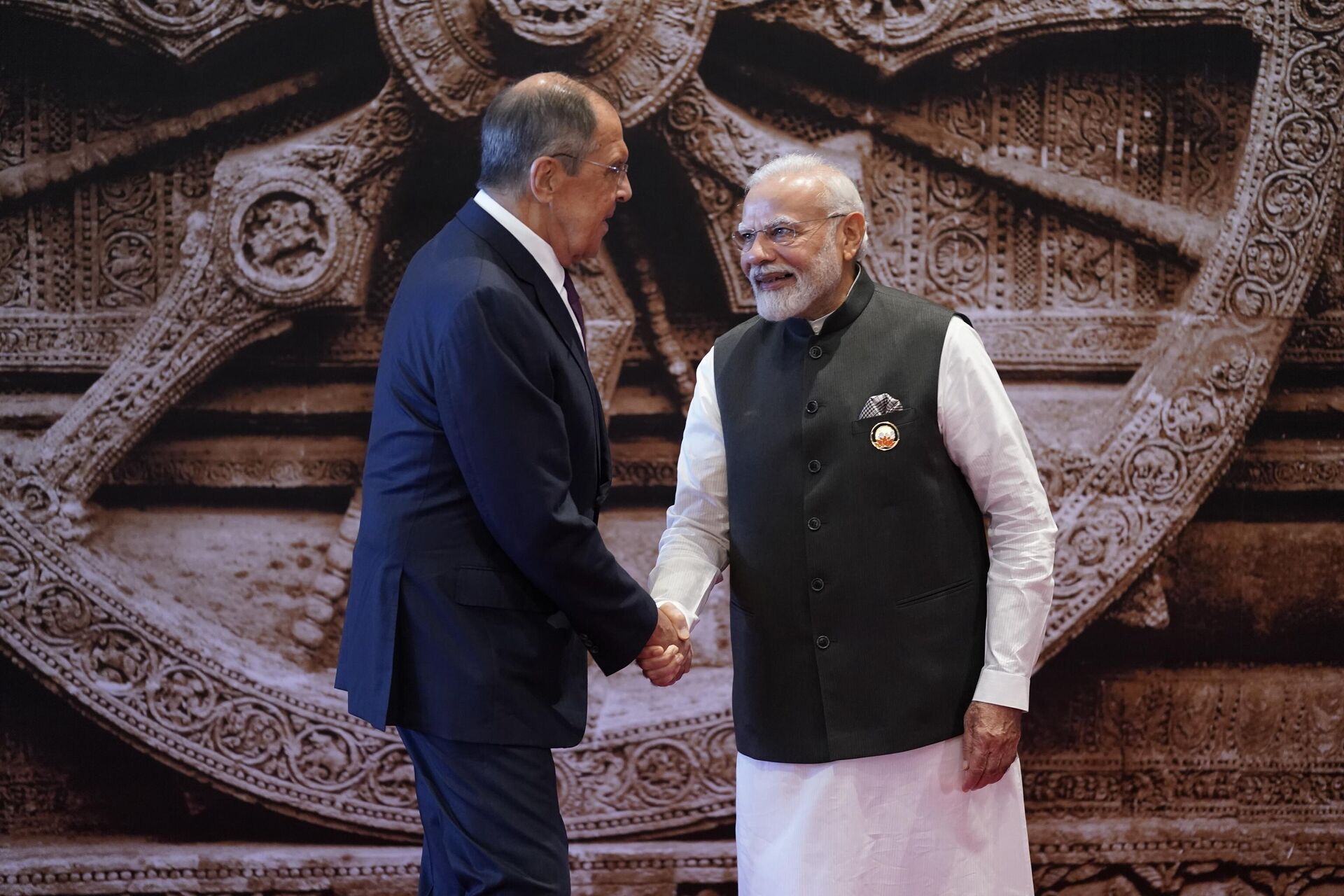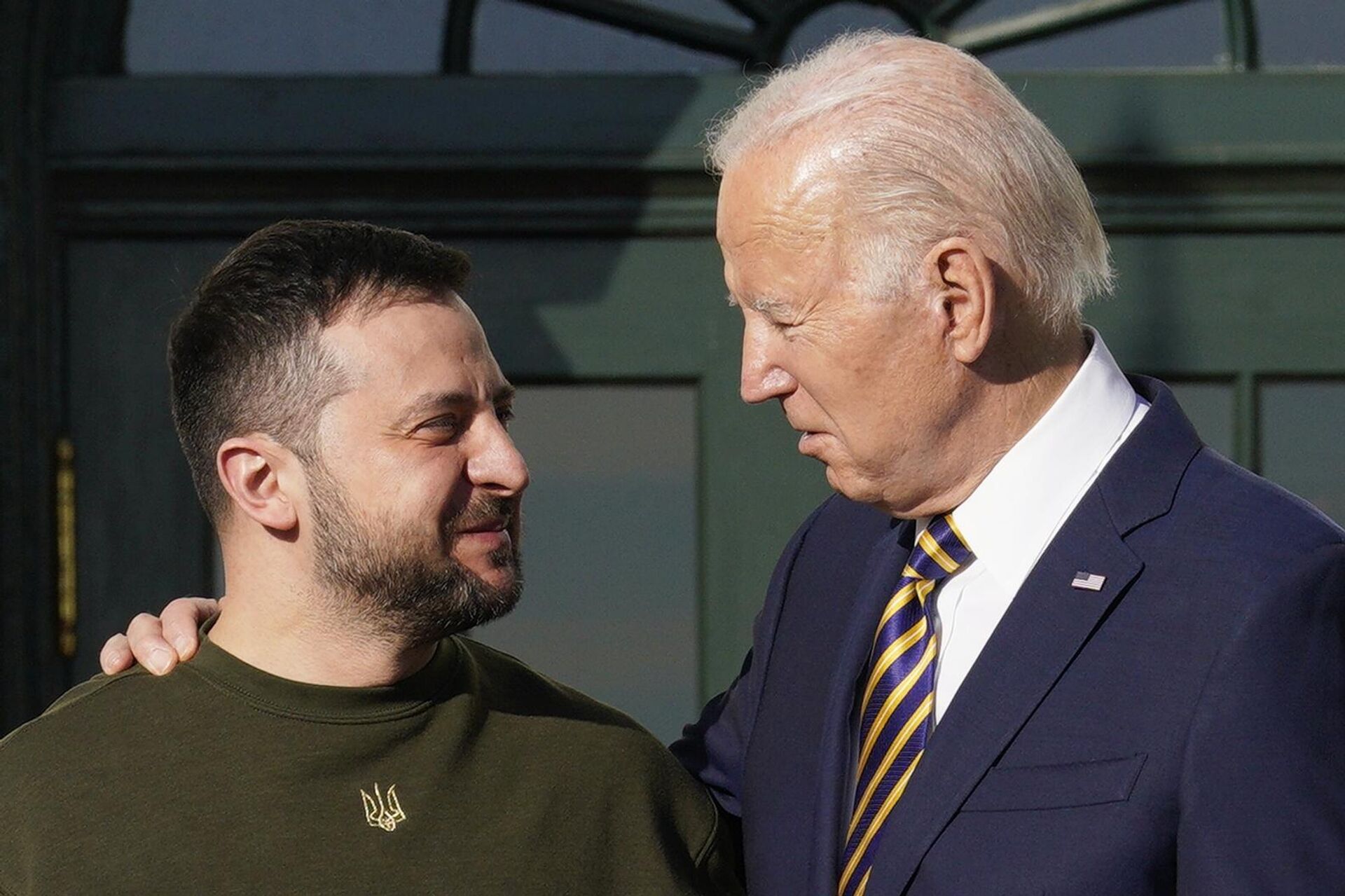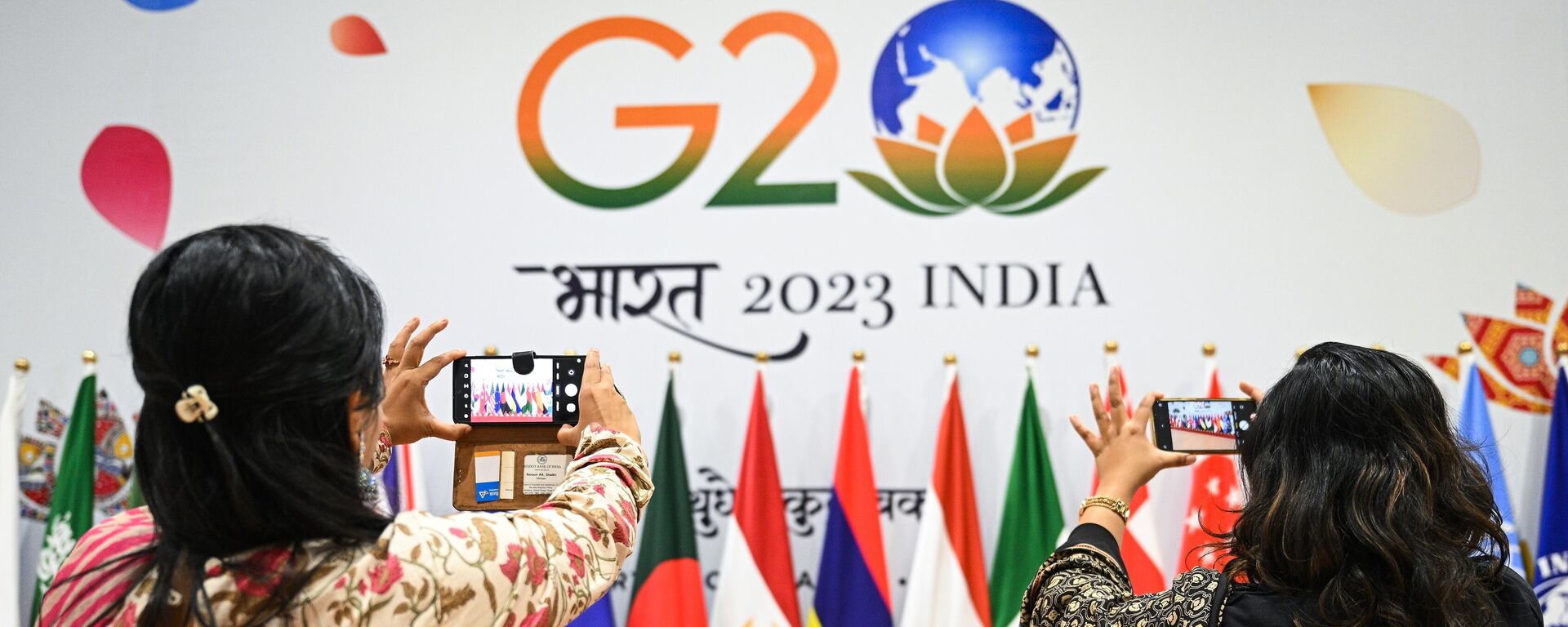S.L. Kanthan: Can We Imagine a World Beyond G-20?
22:20 15.09.2023 (Updated: 14:50 18.09.2023)

© AP Photo / Evan Vucci
Subscribe
In his column for Sputnik India, S.L. Kanthan offers a detailed analysis of the recent G-20 Summit, as well as sheds light on the substance of the American Empire.
Game changer or nothingburger? The recently concluded G-20 summit in India was a fascinating event that was marked with geopolitical tensions, tangible achievements, and hyperbole. After watching the historic BRICS summit in trepidation, Western powers tried their best to woo the Global South, although Biden ruined it a bit by calling them “third-world countries” and “Southern Hemisphere.” In the end, India was the big winner, concluding a commendable year of its G-20 presidency with a well-organized summit and record number of outcomes; Africa was given its rightful place in G-20; Russia celebrated diplomatic wins even without Putin’s attendance; and Saudi Arabia shined in the geopolitical spotlight. Meanwhile, Biden and European leaders could say they enjoyed the best samosas.
Big Picture
Before we go into the details of the summit, let’s take a 10,000-feet view of the G-20.
For 40+ years before G-20, there was only a small group of old Western colonialists - with Japan as an honorary member - that met regularly. That was the G-7, an exclusive club that looked down upon the developing nations.
G20 is thus a recent phenomenon that started only in 2008, when the Western Ponzi scheme collapsed, and the imperialists’ banks had to be bailed out by the rest of the world. China, for example, bought $700 billion of US treasuries during that global financial crisis. Similarly, developing nations around the world pitched in to save the billionaire gamblers on Wall Street and London.
What has the G-20 accomplished in the last 15 years? Can anyone think of a single tangible achievement? Nothing. When Obama came to power in 2009, there was some hope that he would change the trajectory of the American Empire – perhaps he would pause the perpetual wars, and make peace with Cuba, Iran and North Korea. Alas, regardless of the skin color and intentions, every US President eventually follows the orders of the deep state.

November 20, 2016. Then US President Barack Obama attends the APEC Economic Leaders' Meeting in Lima.
© Sputnik / Mikhail Klimentyev
/ In 2011, the US (and some allies in the region) armed Islamist extremists in Libya to start violent protests. There were false flag sniper attacks as well to fuel chaos – similar to what happened in Ukraine three years later. Then, within a couple of days, American and European leaders cried that “Gaddafi was killing his own people.” A quick NATO resolution followed, enabling the complete destruction of Libya, which ranked 64 in the world in human development index (HDI) in Africa -- ahead of Brazil, South Africa, China, and India. After eleven years of nightmarish civil wars, Libya’s oil resources – the largest in Africa – are now being taken over BP and other Western oil companies.
If one had listened to US General Wesley Clark, the sacking of Libya wouldn’t have been surprising. He revealed in 2007 that, right after the 9/11 attack, Neocons in Washington DC had planned to “take out” 7 countries in 5 years. Those targeted countries included Iraq, Syria, Lebanon, Libya, Somalia, Sudan and ending with Iran. The plan didn’t quite work out as the warmongers had planned, but they have certainly caused tremendous destruction.
By the way, the entire Arab Spring was a region-wide color revolution organized by the US as a part of its attempt to reorganize the entire Middle East.
While the world was focused on Libya, an identical conspiracy was being carried out in Syria. Starting in March 2011, there were violent protests in many parts of Syria, thanks to extremists and weapons pouring across the border from Jordan and Turkey – all orchestrated by the Big Boss, USA. When the Syrian government didn’t collapse, the US resorted to the old Mujahideen playbook from the 1980s. Tens of thousands of Al Qaeda fighters were flown from all over the world and infiltrated into Syria, starting in 2012. Jack Sullivan famously emailed to Hillary Clinton: “Al Qaeda in Syria is with us.” The illegal war on Syria was a massive operation coordinated by the US and a myriad of its allies – UK, France, Saudi Arabia, Qatar, Jordan, and Turkey. Only thanks to Russia’s direct intervention did Syria survive. Else, the entire country would have turned into a jihadist haven – just like the Idlib region now. By the way, before the proxy war, Syria was prosperous, peaceful and secular. Its GDP had tripled in the previous decade under President Assad; and the country was even named as one of the top 10 tourist places in the world by the NY Times in 2010.
The Nobel Peace Prize-winner Obama didn’t stop there. He also staged a color revolution and coup in Ukraine in 2014 with the help of Nazis. As the head of NED, Carl Gershman, wrote in Washington Post in 2013, “Ukraine is the biggest [geopolitical] prize.” (NED or National Endowment of Democracy is a CIA front organization to carry our regime changes in countries that are not subservient). US elites are terrible in planning for the long-term welfare of their own citizens, but are superb in planning long-term chaos. The concrete plans to bring Ukraine into US orbit go back to the 1990s, when the US State Department and George Soros started “investing” billions of dollars in creating grassroots movements, rewriting textbooks to fuel ultra-nationalism, buying politicians, and installing pro-US oligarchs. Also, the 2014 Maidan Coup was not the first one in Ukraine – it was preceded by the 2004 Orange Revolution, which overturned the presidential election and installed a pro-US puppet in Kiev. In short, the US succeeded in destroying Ukraine by turning the latter into an expendable pawn. The future of Ukraine is bleak, if there’s a future.

U.S. Assistant Secretary for European and Eurasian Affairs Victoria Nuland and Ambassador to Ukraine Geoffrey Pyatt, offering cookies and (behind the scenes) political advice to Ukraine's Maidan activists and their leaders.
© AP Photo / Andrew Kravchenko, Pool
When it comes to parallel processing, nobody beats the CIA. In 2014, the US stirred up a color revolution in Hong Kong. And it was repeated in 2019, after which the Chinese government put an end to it, once and for all. In parallel, the US stirred up Uyghur separatists in the Xinjiang region. Many of the radicalized Uyghurs had also gone to Syria to join the Western-funded jihadist groups to get battle experience. After having failed in Hong Kong and Xinjiang, the US now has one final plan to disrupt China’s rise: start a war in Taiwan Straits.
Other accomplishments of the de facto G20 leader include successful coups and attempted coups in Brazil, Bolivia, Venezuela, Nicaragua, Belarus, Kazakhstan, Egypt, Iran, Pakistan, Sri Lanka, Thailand and more. Violence and subversion are the only ways the American Empire can maintain its power – not through trade and diplomacy with free and sovereign countries.
Interestingly, many of America’s allies suffer from its savage foreign policies. Europe, for example, could have prospered by having good relations with Russia. Instead, it has shot itself with war and sanctions on Russia. Without abundant and competitively priced Russian oil, gas and coal, Europe is slowing down, especially Germany. Europeans don’t understand they are viewed as a “frenemy” by the US. Americans would like to cripple German manufacturing and then have the smartest people and best companies move to the US. As for all the American wars in the Middle East, they resulted in millions of refugees flooding to Europe, destabilizing its society and weakening the economy. As Kissinger once said, “It may be dangerous to be America's enemy, but to be America's friend is fatal." G-20 members should ponder over that quote.
Apart from the kinetic wars that have pushed the world to the brink of WW3, the US has also been waging tech and trade wars against China for the last five years, disrupting innovation, competition, and free market. The global supply chain has been weakened by the US’ forever wars, resulting in high inflation worldwide.
The leader of G20 is the Empire of Chaos.
Key Achievements of G20 Summit in India
Coming back to India’s G-20 presidency over the last year, the Modi government took its role seriously and accomplished a lot in terms of outcomes – global meetings, white papers, and memorandums of understanding. On a humorous note, many Indian media went overboard claiming that India has become the “voice of the Global South,” and made it sound as if the world got together and elected India as the G-20 leader, when it was just a matter of rotation – for example, last year, the G-20 presidency went to Indonesia; and next year it will be Brazil.
Ignoring the hype, the summit went without a glitch. The government spent $500 million on the summit, covered up all the slums in the area (thousands of homes were also destroyed, rendering people homeless), shut down schools and many businesses to reduce the traffic, and built a modern conference center. There was a lot of emphasis on Indian culture – dancing, food, historical symbols and so on; and Modi even changed his name plate from “India” to “Bharat” to please his nationalist voter base. Modi’s slogan “one earth, one family, one future” had similar laudable ideals to Xi Jinping’s “common prosperity with shared future for mankind.”

Indian Prime Minister Narendra Modi welcomes Russian Foreign Minister Sergey Lavrov
© AP Photo / Evan Vucci
The three most notable outcomes were:
African Union joining the G-20 as a new member;
Ukraine war statement. (Big win for Russia);
India-Middle East-Europe Corridor.
There were also political and economic gains for India, which has been leveraging Sinophobia among the US and its vassals. For example, India might be chosen to rip and replace Huawei’s and ZTE’s 4G infrastructure in the US; and the UK is on the verge of signing a free trade agreement with India.
More importantly, the US is nodding to almost any fancy initiative that India proposes – like the Global Biofuel Alliance, which is a non-binding agreement to increase ethanol content to 20% in fuel for cars by 2030. Another example is India’s proposal to lead a project for Digital Public Infrastructure (DPI), which would also see India and the US build things such as mobile payment systems in developing countries.
Saudi Arabia’s Deft Diplomacy
During the 2020 election campaign, Biden said he would turn Saudi Arabia into a pariah. Later, the inexplicable hostility continued, until Saudi Prince Salman (MBS) turned towards Russia and China. MBS helped Russia by cutting oil production and increasing oil price; hosted a historic China-Arab Summit centered around Xi Jinping; and then joined BRICS.
Shocked by this display of Saudi Arabia’s strategic autonomy, the US has been desperately trying to bring the Saudis back into the US sphere, while striving for Israel-Saudi Arabia normalization. That’s the real story about the so-called India-Middle East-Europe corridor, which should be renamed UAE-Saudi-Israel corridor. The eventual goal is to ship Saudi/Emirati oil to Europe through the Israeli ports, one of which is 70% owned by Adani, the Indian billionaire Adani.
For some propaganda reason, the corridor has been portrayed as India-centric, when India accounts for only 2% of EU’s trade. Plus, it doesn’t make logistical sense to unload the Indian cargo at the UAE port, send it by train through 2,500km of desert and four different countries, and load it onto another ship. The entire process in this corridor can take up to two weeks, by which time the ship could have reached Europe through Suez Canal.
Nothing has been spelled out about this project – such as budget, timeline, roles and responsibilities.
Anyways, the US is all talks and no action when it comes to infrastructure projects. Previous grand projects like Build Back Better and Blue Dot Network turned out to be empty promises. Western politicians immensely relish publicity stunts that counter China’s Belt and Road Initiative and Russia’s INSTC.
Moreover, the multipolar ship has left the port with Saudi Arabia as the passenger; and there’s no way that the Saudis are going back to the old security architecture. If Saudis and Iranians can build on their new relations, there’s no need for big bad US military and its protection racket. When Arab countries and OPEC start selling oil for yuan, it’s goodbye to petrodollar, which underpins American hubris.
Ukraine Loses
The biggest loser in this G-20 summit was Ukraine, which saw India, China and Brazil get together to water down the statement regarding Russia. First, the joint declaration removed phrases such as “Russian aggression” and “condemn.” Second, the conflict was described in a neutral term – “War in Ukraine” – which wisely didn’t assign blame to Russia, which is defending itself from a vicious proxy war.
Needless to say, Ukrainian officials are quite upset. Zelensky’s advisor lashed out in an interview, accusing India and China of having low intellect. He had also previously said the same thing about Africa. However, such Nazi-talk from America’s cannon fodder is going to only push the Global South closer to Russia.
While the West will try to inflict maximum damage to Russia, this war of attrition will also deplete NATO’s ammunition and cause irreparable harm to the European economy. The American public, which has attention deficit disorder, will soon be tired of the Ukrainian war. It’s only a matter of time that the US dumps Ukraine and moves on to the next geopolitical pawn: Taiwan.
Conclusion
Comparing the BRICS summit to the G-20 summit, it’s a story of two parallel universes. BRICS was about cooperation, development and win-win deals; G-20 was about neo-colonialism, wars, and a zero-sum attitude.
Look at the relations the US has with other G-20 members:
Mexico, Argentina and Brazil are subjected to Monroe Doctrine.
Canada, Australia and the UK are vassals under the Five Eyes umbrella.
Germany, Japan, and South Korea are literally occupied by US military.
Russia and China are geopolitical rivals that the US is trying to destroy through hybrid wars.
So, what kind of a dysfunctional group is this where most members don’t have freedom and sovereignty? How can these “allies” have democracy when their leaders are puppets of a foreign nation?
India enjoys relatively more leeway only because the US needs the former to contain China. Plus, American corporations make enormous profits from Indian markets and labor. Hopefully, Indians will soon realize this exploitation is not the right foundation for a healthy, long-term relationship.
The mainstream media watches the clown show that is G-20 and applauds the tiresome clichés and vacuous buzzwords such as democracy, freedom, rules-based order, and shared values. However, the urgent challenge for humanity is to end this tragic clown show and rearchitect a new world that’s based on higher consciousness and better principles.


